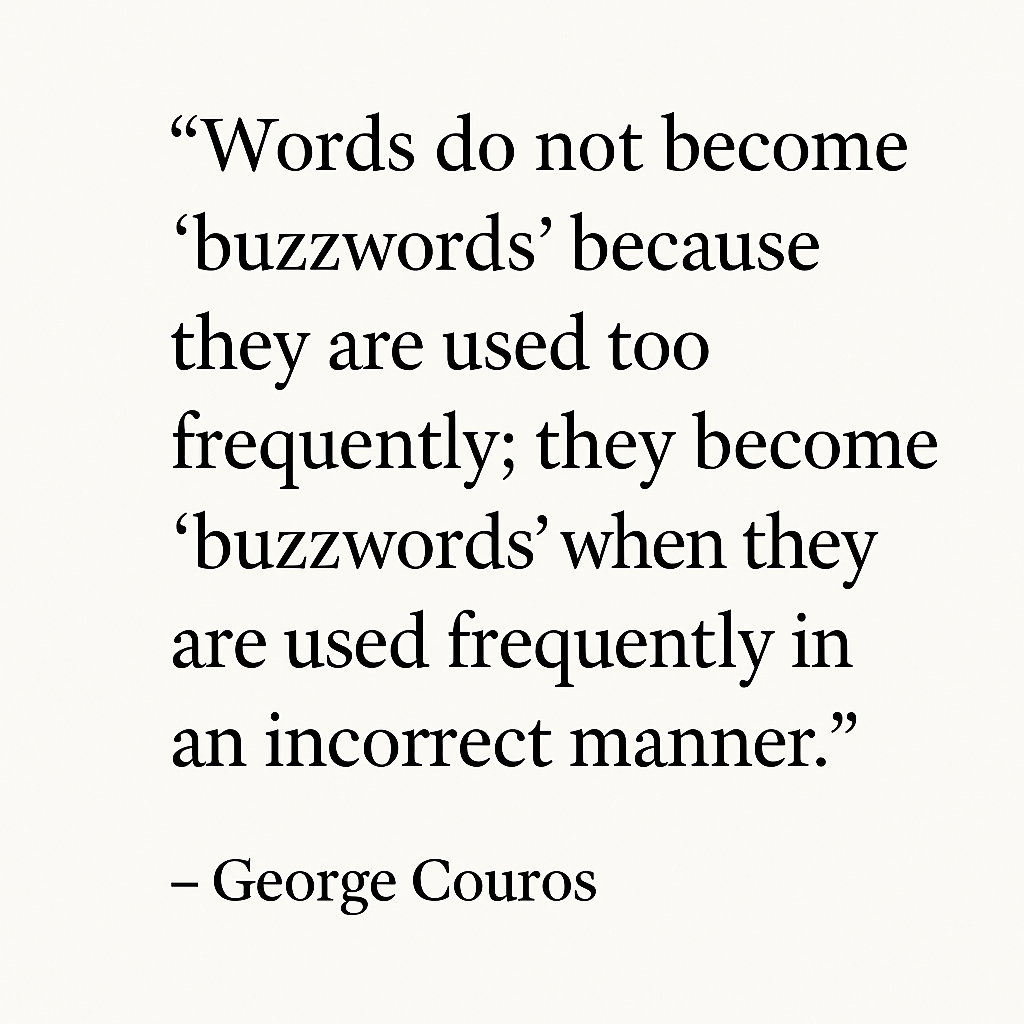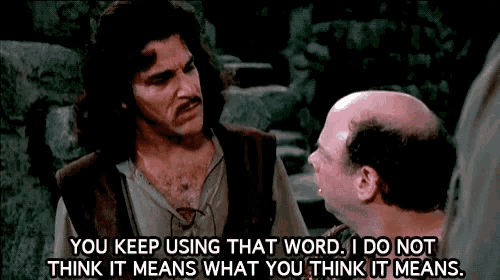
For the month of July 2025, I wanted to revisit some of my past blog posts and reflect on why I wrote them in the first place. Today’s “revisit” is titled “3 Misconceptions About Innovation in Education” and by going through the editing process, I know I wrote it because I was concerned that it was becoming either a) a buzzword or b) becoming specifically associated with the word technology.
The first happens when words are just “said” in education, because we think we should say them. The word “innovation” is not unique in this manner, and the premise of my book “The Innovator’s Mindset” was to define the word and show how seeing it as a way of thinking could help people not only navigate change, but create the change they wanted to see in their classrooms, schools, and districts.
The second point of innovation being seen as synonymous with “technology” still happens to this day. A quick example is that many will say, “Innovation is not just about technology!” but then switch the “Tech Director” title to “Innovation Officer” or something similar. I contend that innovation should permeate our thinking in all areas of education, and I hope that more curriculum directors and inclusion specialists will lead this initiative in their schools.
With that preamble to set the stage, check out the post below, which has been modernized with some grammatical edits, as well as addressing some of the key considerations we will need to navigate with AI.
3 Misconceptions About Innovation in Education
“Innovation” is one of the most-used words in education.
It is something that I am obviously passionate about, which is why I wrote the book, “The Innovator’s Mindset.”
However, like other terms in education, the term is used because it sounds good, but what does it actually mean? When people say a word over and over again, one of the things I ask them to do is define what they mean, so it is clear in both of our minds where the focus lies.

My fear has been that when we use the word “innovation” in the wrong way, it becomes a meaningless fas.
Words do not become “buzzwords” because they are used too frequently; they become “buzzwords” when they are used frequently in an incorrect manner.
Here are some misconceptions about the word that we need to dispel to protect “innovation” in education from becoming a buzzword.
Innovation is about how you use technology.
Nope…this is incorrect.
I believe that this happens because many technologies are advertised as being innovative (new and better) compared to alternatives, which holds some truth.
However, I have focused on defining innovation as a way of thinking, rather than simply the way we use technology.
For example, is using a Scantron to mark multiple-choice exams innovative in the scope of teaching and learning?
It is definitely convenient, but does this lead to better learning in the classroom? My answer is that it could ultimately lead to worse learning, faster.
As a high school teacher early in my career, once we received a Scantron, I made every assessment “multiple choice” because that would save me time, but did it make learning deeper and more meaningful for students? I doubt it.
I am not about absolutes, so a singular multiple-choice assessment is not going make anyone a bad (or good) teacher.
To clarify my point, there are numerous ways to utilize Google Forms, but the ability to use Google Forms is not innovative; it is what you do with it that creates innovative practices in the classroom. Today, that same statement would be with any AI technology.
Educators can be innovative in many ways without relying on technology.
For example, many school districts are revamping their professional learning to focus on staff voice and choice on what they learn, which hopefully, models opportunities that may present themselves to students.
Dispel the myth that “technology equals innovation,” and you will see that many educators recognize that many things they are doing in classrooms right now are incredibly innovative, with or without technology. Innovation is about “mindset,” not skill set.

This leads to the next misconception.
Innovation is reserved for the few.
Again, no.
If innovation is about “doing new and better things,” why should it be reserved only for the few? This does not mean you get rid of what you were doing previously, but you constantly evaluate if it is working for your students.
Many people will stick with things because they are familiar with them, not because they are inherently better than a new opportunity presented.
A weird example as I write this: I purchased a new MacBook Air about a year ago, as the one I had for over five years was experiencing issues for a significant amount of time. As much as that computer was testing my limits, I knew the switch to a newer version would cause some initial bumps (for example, the keys were in slightly different spaces than what my fingers were used to). At first, it was difficult to adjust, but this device is way better than the one I had before. I keep this in the back of my mind when navigating a new thing for the first time. Is this a temporary adjustment that will lead to something better, or is this just “new?”
The process of innovation in teaching and learning is something that all educators should aspire to. Here is an image that may help you see why it is essential.

Are there only a few educators in your organization who should approach the process of teaching and learning in this way, or should everyone? This is not something that should be done by a few, but rather the norm in schools.
If there is a better way than what we are currently doing, finding it will benefit everyone.
Innovation is solely a “product”.
People believe the iPhone was innovative. It is in some ways. Yet it is the thinking that created the iPhone in the first place that was the innovation.
Someone had to have a vision of what a “phone” could be, but when you look at the innovation of mobile technology, this has led to other innovations.
Uber, Airbnb, iTunes, and numerous other innovations were created because smartphones were developed.
Going back to AI, one of the things we will have to consider is what will be the “other” things that will be created because of this technology that is everywhere now.
When the automobile was invented, it eventually, for the most part, replaced the “horse and buggy” industry; however, mechanics, road workers, tire manufacturers, and others were created because of the disruptive technology of the car.
Will the same be true with AI?
What will people create to surround and support that new technology? It can definitely replace many current jobs, but there is also an opportunity to create entirely new industries, which will depend on thinking beyond a product.
Innovation occurs in the thinking that leads to the creation of these things in the first place; they did not come to fruition on their own. Many people have great ideas, but bringing these ideas to life is what drives innovation. Creativity leads to innovation, but I have met many “creative” thinkers who do not bring their ideas to life.
As I have stated numerous times, innovation should not be reserved for the few but should become the norm in education.
It permeates every aspect of our work, from assessment practices and leadership to professional learning, technology use, and many other areas, ultimately influencing teaching and learning.
The first step in getting people to move there is to recognize that this is not an individual effort, but a team sport.
(If you are interested in learning more about “innovation in education,“ I would encourage you to read my book, “The Innovator’s Mindset,“ if you haven’t already. The hope is that we see innovation become the norm in education, not reserved for the few.)